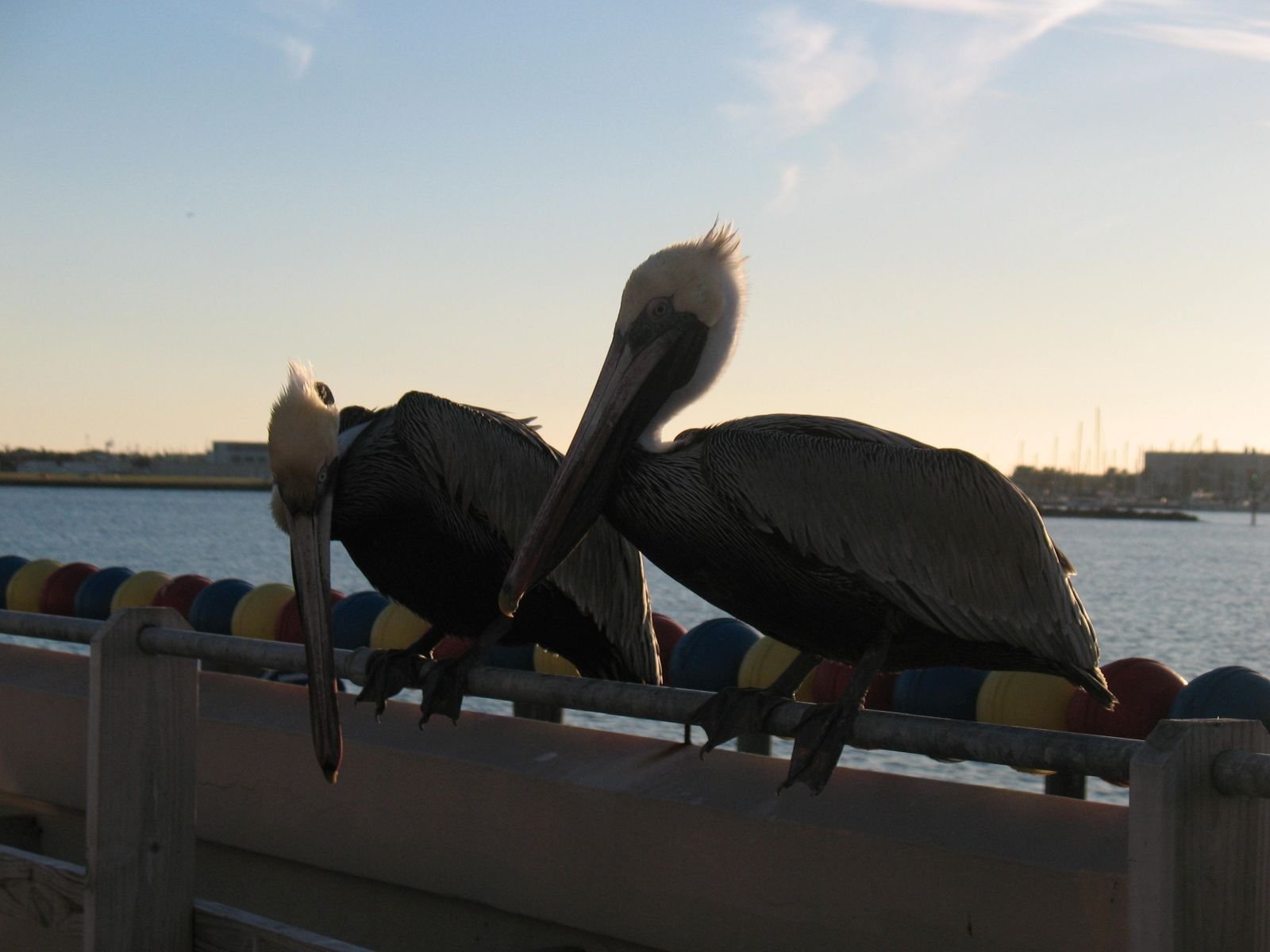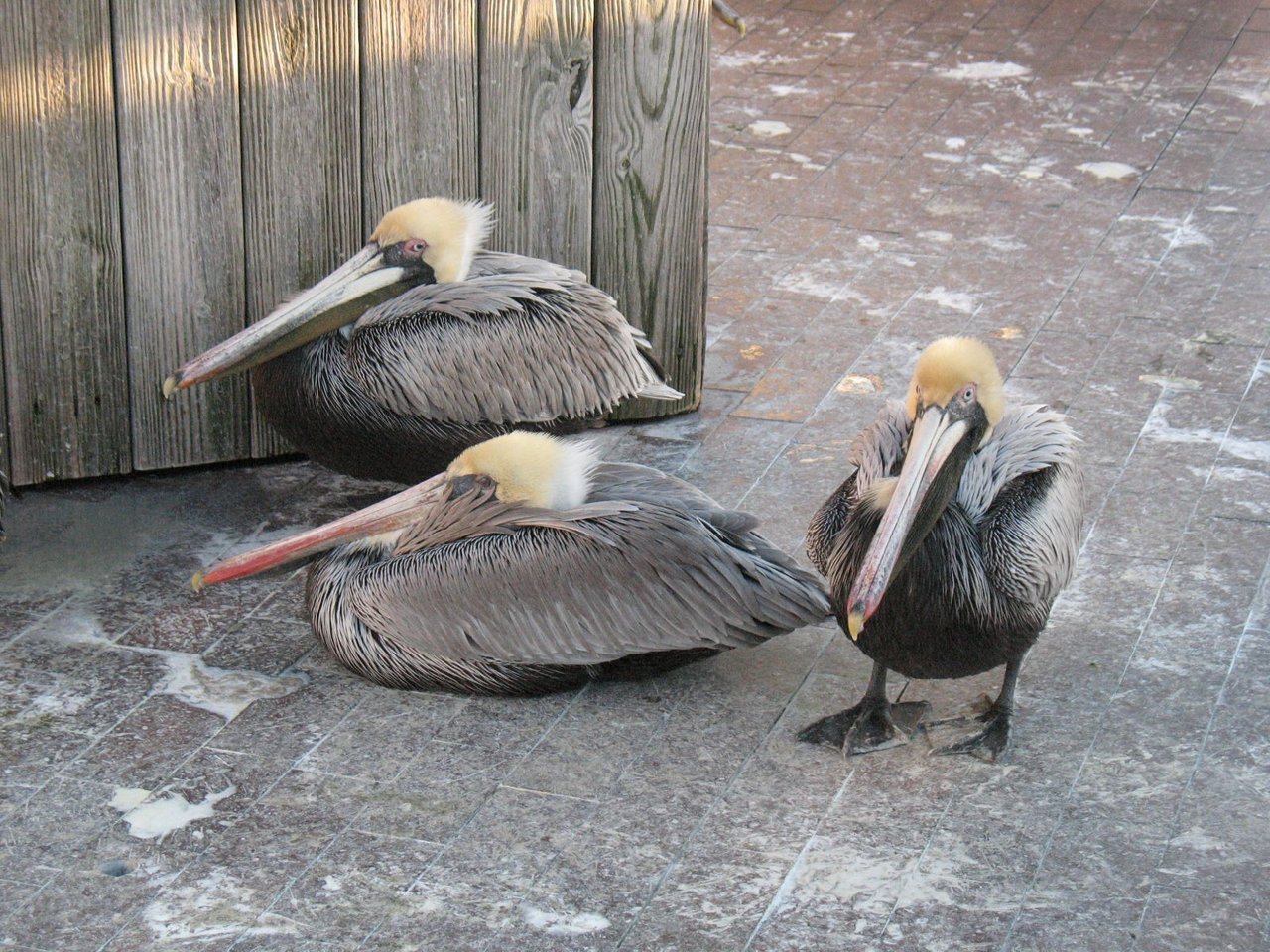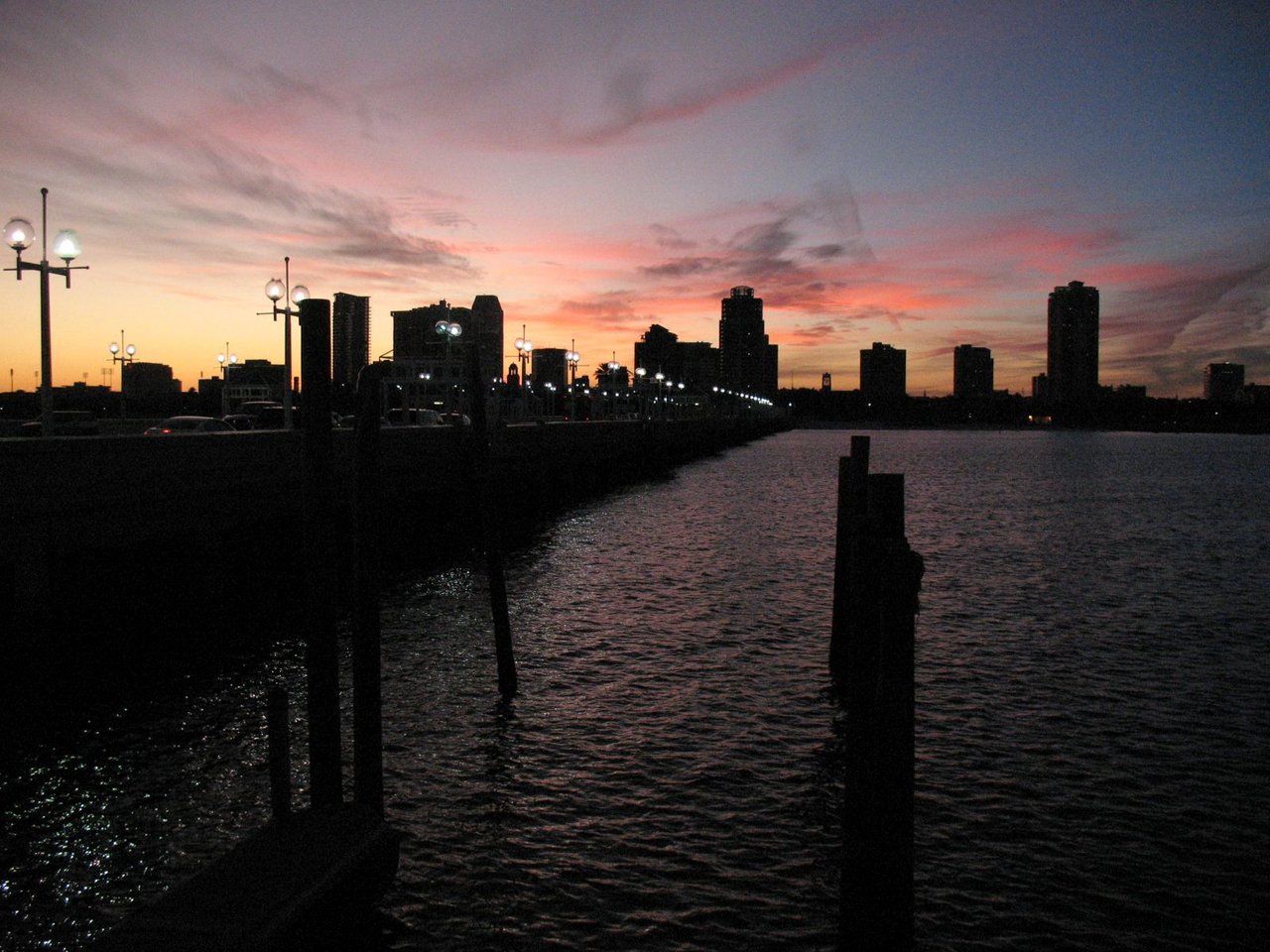
I love pelicans
and am grateful that they have
returned once again

I remember as a kid, going to P.O.P. (Pacific Ocean Park) with my family, or to the Santa Monica Pier, or any one of a number of other beach destinations, and enjoying seeing all the seabirds flying around, especially the pelicans, long my favorites.
Being a dinosaur freak as a kid (and adult), they always made me think of feathered pterodactyls, long before Jurassic Park.
And then the unthinkable happened.

Along our piers and beaches, and along the U.S. West Coast, pelicans, and many other fish-eating birds, began disappearing. And it wasn't just sea birds; the populations of a large percentage of bird species, including peregrine falcons, ospreys and bald eagles, across the nation, also began plummeting.
It got so bad that, by the late 1970s, it was rare to see a brown pelican, once among our most common California seabirds, and even rarer to see a white pelican, which were never as numerous.
And we missed them. Their almost complete absence was a sad reminder of the virtual omnipresence we remembered from such a short time before.

The official explanation was that DDT, widely used as a pesticide from the mid-1940s onward, contained in run-off from farms all up and down the coast, was highly toxic to marine organisms at the bottom of the food chain, and as they were eaten by fish and other sea creatures, and the poison worked its way up to apex predators, such as fish-eating seabirds, it was so damaging to them that they were laying eggs with shells too thin to survive until hatching.
Their population declines actually began long before, and the decline in many bird populations, including songbirds, had become so widespread by the late 1950s, that the eminent marine biologist and author, Rachel Carson, wrote about it in her groundbreaking 1962 book, "Silent Spring."

In the book, she pointed to DDT and other chemical pesticides as the likely culprit of the population declines, in both the birds and in their prey species, documenting disastrous environmental effects that coincided with the onset of the widespread use of such chemicals in U.S. agriculture.
While the book and its assertions were vilifed by the chemical companies it was calling out, it prompted then-President John F. Kennedy to note the importance of the book, and to form a special panel of the President’s Science Advisory Committee to study the issue. By May of 1963, the Committee was in agreement with every salient point Carson had made in her book, and the process to ban the use of DDT in the United States began, with a complete ban in U.S. agriculture going into effect in 1972; the same year that the Endangered Species Act went into effect.

When I first visited my dad in Tampa, Florida, in late 1982, I was heartened by the discovery of a numerous and vibrant community of brown pelicans along the beaches of nearby Pinellas County, across the bay from Tampa, and delighted in their antics when I first visited the St. Petersburg Pier.
It was as though I had been transported back in time to my childhood.
Although the Tampa Bay area had known its share of environmental blunders as well, it lacked the coastal mountain ranges, with rivers dumping the runoff from farmland into the seas, and as a result, their seabird population was far healthier than that of California. And that realization, in addition to my lifelong love of thunderstorms, had a great deal to do with my decision to relocate there the following year.

Happily, in intervening years, California's pelicans and other seabirds recovered substantially, peregrine falcons and bald eagles were rescued from almost certain extinction, and the work done by conservationists to enact these changes has been more than vindicated long since.

But we are not out of the woods yet. Despite DDT being banned in 1972 in the United States, and shortly before or after across much of the globe, DDT is known to persist for decades. Nearly half a century after being banned, the vast majority of humans still contain DDT and its derivatives within our tissues, blood, and even breast milk.
And there is credible evidence that DDT is still causing the deaths of California condors, released along the coast, which feed in large part upon the carcasses of sea mammals; and which, like all apex predators, concentrate toxins in their tissues. This does not, so far, appear to be affecting condors released in inland areas.

Additionally, there is conflicting evidence regarding the ongoing effects from the disastrous radiation spill from Fukushima, with pro-nuclear and pro-chemical voices not surprisingly downplaying damages to the environment.
I remain grateful for the resurgence of pelicans, brown and white, and of other seabirds and wading birds, such as the magnificent blue heron I saw flying overhead as I neared my home today.
I hope and pray that we humans will wise up, cease polluting our beautiful planet, and begin treating our natural resources and environment with the care and respect that they so richly deserve.


Some of the many sources I've used for this post:
http://www.ontheissues.org/celeb/John_F__Kennedy_Environment.htm
http://www.audubon.org/magazine/may-june-2012/rachel-carson-and-jfk-environmental-tag-team
http://www.environmentandsociety.org/exhibitions/silent-spring/us-federal-government-responds
https://pdfs.semanticscholar.org/e05a/d934e22aea6203c3659903c5874bd00ee46a.pdf
https://www.who.int/water_sanitation_health/dwq/chemicals/ddt.pdf
https://academic.oup.com/ije/article-pdf/28/2/179/18477516/280179.pdf
https://en.wikipedia.org/wiki/DDT

All words and images are my own. The photos in this post were all taken by me in January, 2010, at the St. Petersburg Pier, in St. Petersburg, Florida, using my Canon PowerShot camera.
Resteeming is welcome, you may link to my post from your own website or blog, and you may use excerpts and/or images as long as you credit me, Cori MacNaughton, and link back to this post.
Please ask for permission, before using my work without linking to this post, as all rights are reserved.
